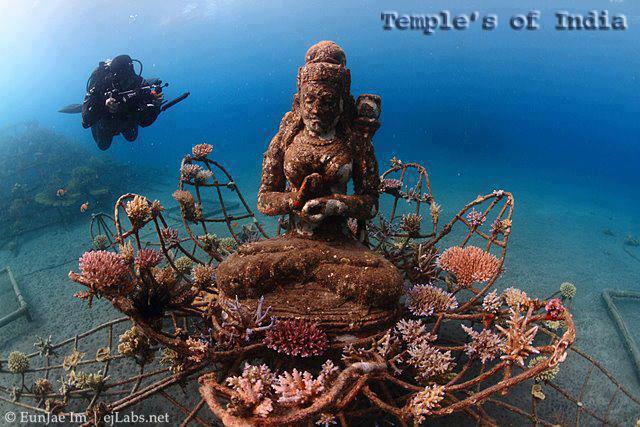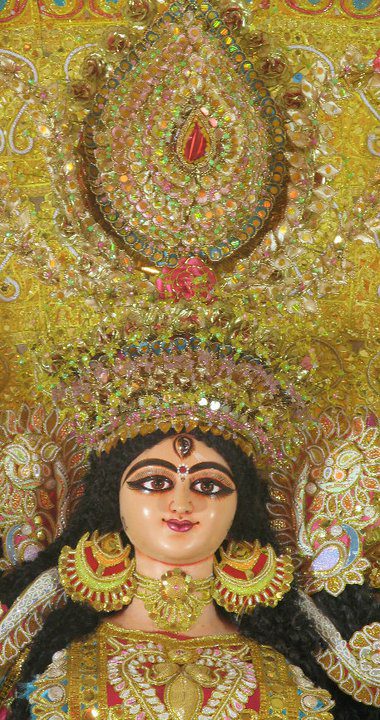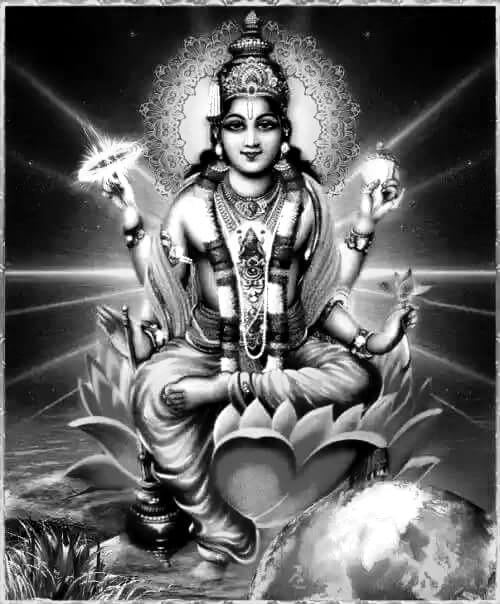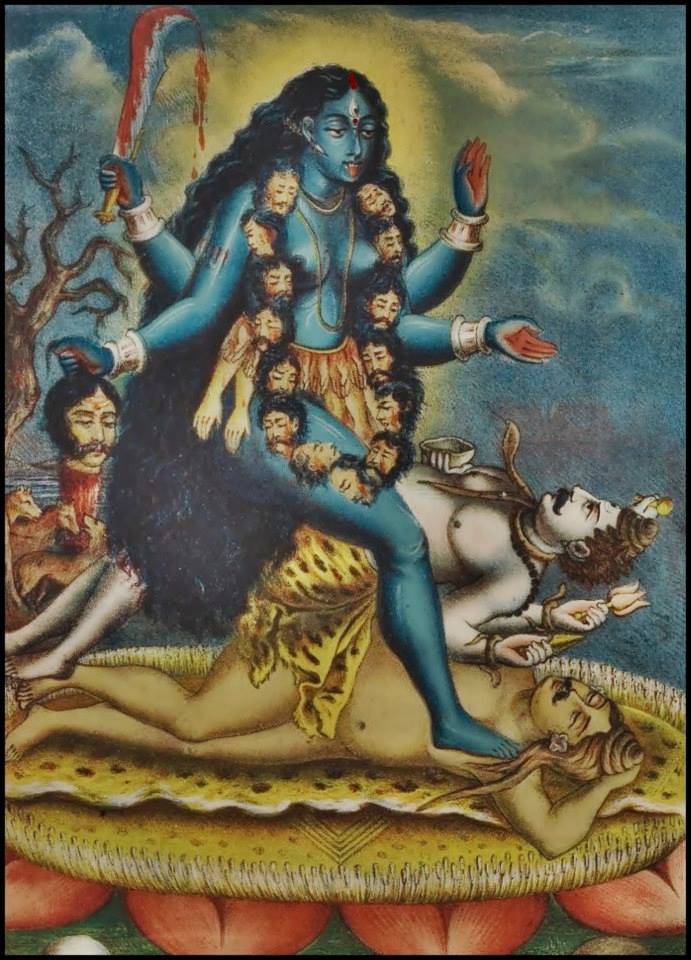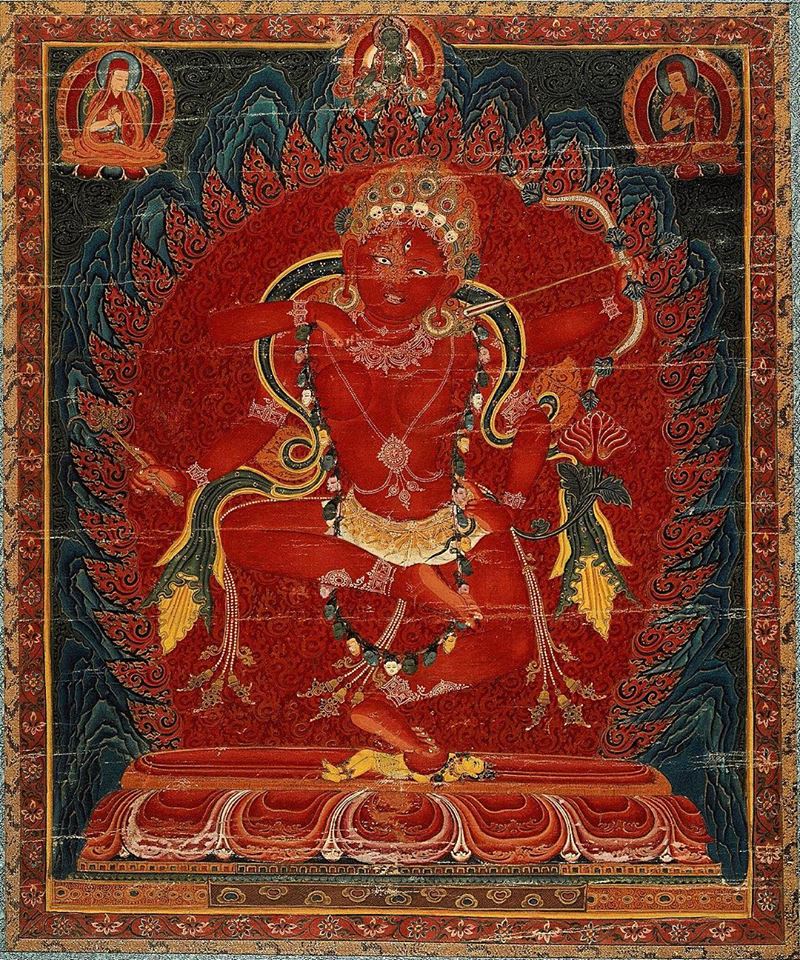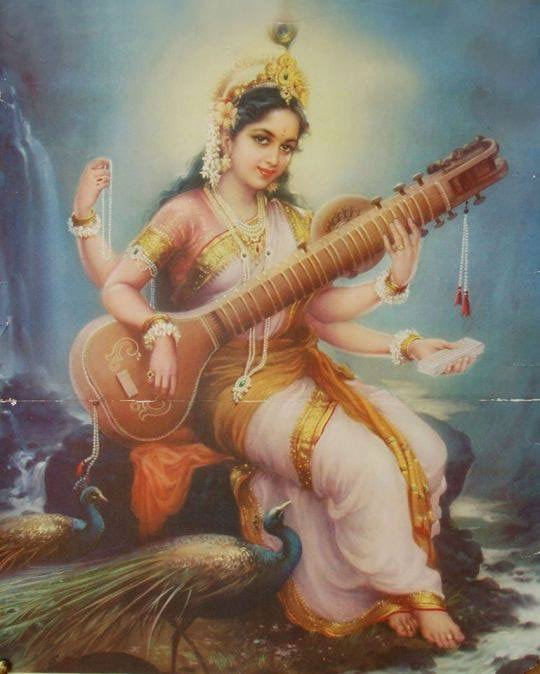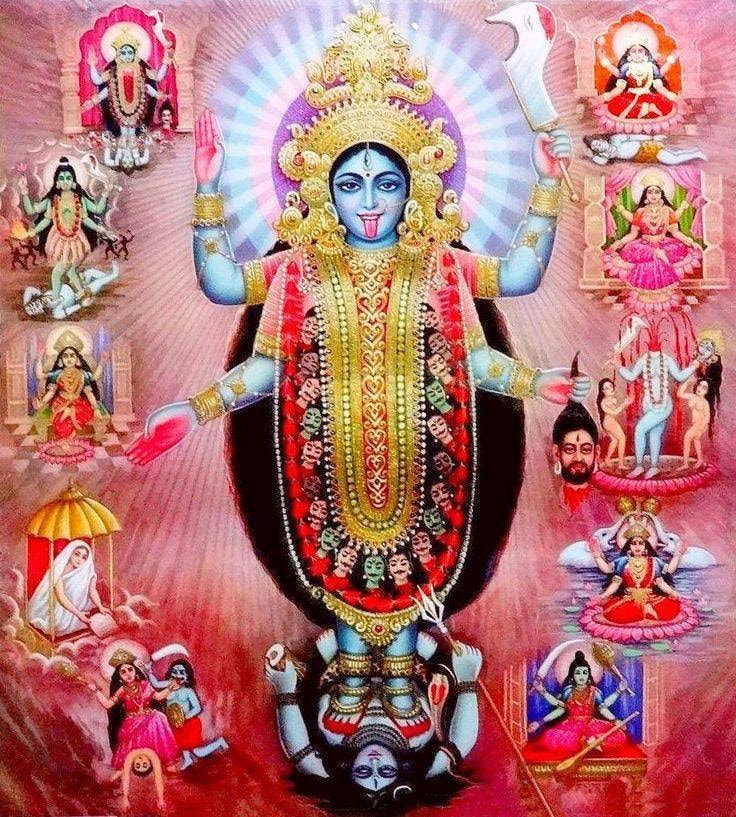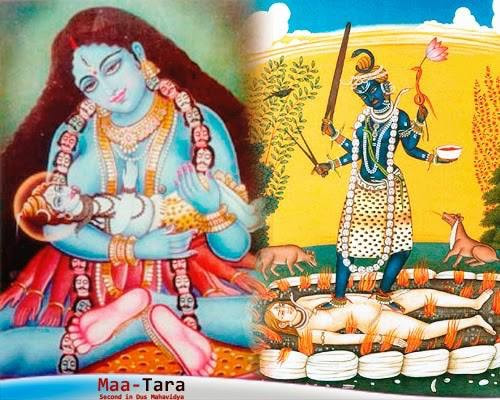
Goddess Kali is also known as Kalika. She is the most well known and worshipped Goddess. Mother is considered to be the earliest manifestation of annihilation in the Hindu pantheon. This figure of annihilation has its opposing Divine Mother, the ‘redeemer of the universe’ role. She destroys only to recreate and it is sin, ignorance, ego and decay that she annihilates. It is Rudra-Shiva that destroys creation and Kali is the power or energy on which the Lord Acts. Thus she is Shiva-Shakti without which Shiva could not act. In their ‘kala’ they both assume dark formlessness. In their void they are yet full of potential.
WORSHIP: It is widely believed that Kali worship is pre-Aryan and that she is a Goddess of Dravidian origin belonging to the Indus Valley civilization. There has been no evidence that Aryans ever raised a female deity to the ranks held by Mother Kali. The Aryan Invasion Theory has caused much confusion. Kali has always been the female energy of Lord Shiva. Vedic recognition of Shiva-Shakti has not been in dispute. Each manifestation of Kali is being worshipped in a particular way. Animals sacrifices are made to her and this practice continues to this day, for example in Kalighat temple in Calcutta where a goat is immolated in her honor every day. This has its own philosophy and justification by devotees.
Of all the Dark Goddesses, Kali is the most realised. Blood offering, probably by the warrior group worshippers, was finding the greatest strength from the Protector. Kali represents a multi-faceted Goddess responsible for life from conception to death. Her worship therefore consists of fertility festivals. She is worshipped in her three manifestations: Triple Goddess of creation, protection and destruction; that of heaven, earth and the underworld and the three stages of life. Worshippers recognise that Kali first appears as their Divine mother, then as Shiva’s consort, then she appears as Kalika. Three kinds of priestesses tend her shrines: The Maidens – Yoginis and Shaktis; the Mothers – Matris and Dakinis.
GUNAS: The three gunas are represented by sacred colours; white for Virgin, Red for the Mother and Black for crone. These too represent the cycles of birth, life and death. Together and by being Black it means the formless condition she assumes between creations when all elements are dissolved in her primordial substance.
TANTRIC TRADITION: Kali is not always thought of as a Dark Goddess; rather, she is also referred to as a great and loving primordial Mother Goddess in the Hindu tantric tradition. In this aspect, as Mother Goddess, she is referred to as Kali Ma, meaning Kali Mother, and millions of Hindus revere her as such.
KUNDALINI: As Kundalini she is the Female Serpent. At the beginning of the universe, she starts to uncoil in "a spiral line movement, which is the movement of creation." This symbolically represents death and rebirth as movement into the disappearing-point of formlessness, and out of it again, to a new world of form.
Kundalini or Kali, said to be the essence of speech, lies dormant in the Muladhara Chakra of the subtle body. The Krishna Yajur Veda 2.1.4 states that Vitra is bound by Sixteen Coils, which represent the Sixteen Vowels of the Sanskrit Language, as the primal essence of speech or Vak. The Sixteen chakras also relates to the Throat-Chakra, from where Speech proceeds. These are also origins of the Sixteen Kalaratris or Dark Nights of Kali in Tantra, as representing the Sixteen Kalas or Vowels.
DASA MAHAVIDYA: She is the foremost among the Dasa Mahavidyas, the Ten Tantric goddesses. In Sri Vidya principles, the Goddesses are said to be manifestation of Mother Kali. The counterparts of the Ten Mahavidyas are the Tradition of the Seven Goddesses which are the seven Pranas and Chakras of the Vedas, also Rudras. But they are also Fire-Goddesses and forms of Agni’s wife, Svaha. Agni himself is Vedic Rudra or Shiva, hence the Seven Goddess Tradition is also Vedic as the seven Maidens that are the forms of Agni, his Mother in Rig Veda and wife and mother of Rudra. Manduka Upanishad 1.2.4: “Kali (black), Karali-terrific, Manogava-swift as thought, Suloha-very red, Sudhumravarna-purple, Sphulingini-sparkling and the brilliant Visvarupi-having all forms, all these playing about are called the seven tongues of fire.” The entire teaching of the Mahavidyas is merely a feminine form of Vedic worship of Rudra and the Maruts of the Rudras. The Rudras like Mahavidyas are born from Maharudra or Rudra, like Durga. Kali or Svaha is also the chief of the Devi Cult and hence chief of Vedic Atharvanism.
KALA: The root word of this name is ‘kala’ meaning time. It also means ‘black and dark colored’. It also refers to the Lord of Death, Siva who is ‘eternal time’. Thus his consort, Kali, is also ‘Time’ or death. Kali is the feminine form of kala. It describes that she is time itself or beyond time. In the ‘Shabdakalpadrum’ dictionary is this phrase: ‘kalah sivah tasya patniti kali’ meaning “Shiva is Kala (time) and thus his wife is Kali". As Kalaratri she is ‘black night’ or Kalika ‘relating to time’. Thus she is the power of time which devours all. She has a power that destroys and should be depicted in awe-inspiring terror.
Generally she is the central deity of Time. She created the world and destroys it. She is beyond time and space. After the destruction of the Universe, at the end of the great cycle, she collects the seeds of the next creation. She destroys the finite to reveal the Infinite. This Black Goddess is death, but to the wise she is also the death of death. This can only be revealed through the worship of Kali, and meditation on her mysteries.
VEDAS, UPANISHADS AND PURANA:
RIG VEDA: Rig Veda 57.2 discusses a Goddess later associated with the Goddess Kali, commonly portrayed as the goddess Shakti, in her most supreme form. Although dark, she destroys spiritual darkness, known as “tamas”, which she merges into her own dark formlessness. Kali meaning black or time is also called Ratri -Night, which also refers to her name Prishni - spotted; meaning spotted with stars, which later become her garland of white skulls on her black body.The moon is the symbol of ego and the severed head Kali holds. On this, the following verse from the Rig Veda 10.127.2 states “The immortal Goddess, she fills the vast, high and low places: She destroys tamas (spiritual darkness) with her Light.
RIG VEDA 7.72.12: Kali is the deity who slices the Ego and takes us into Immortal life or Moksha as in the Mahamritunjaya Mantra to Rudra. This mantra appears in RV 7.72.12 long before its apperance in Krishna Yajurveda (also known as Taittriya Samhita)
AITAREYA ARANYAKA 4.6.14: In the Vedas, the Goddess or Divine Mother was lauded as Speech. Speech is the Mother in Hinduism. This refers to Tara and also to Kali’s origin, as Speech and Tongue, respectively as a Goddess as in Mundakopanishad.
ATHARVA VEDA 10.19.53-54: All things in the Universe exist in frames of Time (Kala). The Universe as Time is the Mother of all. It is the Infinite One or Primal-Being (Aditi). Kali means 'The Cause of Time', and as such, is the Transcendent Time itself (Parakala).
In this regard, we note of the Kala Suktas of Atharvaveda (10.19.53-54). It states:-'From Time (Kala) the waters arose, from Time Brahma, the Heat (Tapas), the Regions. Through Time the Sun arises, in Time, he goes down again.
ATHARVA VEDA: 10.19 54: Through time does the wind blow, through Time the great Earth; the sky is within Time. In Time, the son gave birth to that which was, and shall be.'
MUNDAKA UPANISHAD 2.4: Kali is mentioned as one of the seven tongues of Agni, the Rigvedic God of Fire. Agni had seven flickering tongues of flame of which Kali was the black horrible tongue. The Seven tongues Mundaka speaks of, starting with Kali, are the Opened or Awakened Seven Chakras, or the Seven Speech-forms, Seven Tongues inside Agni who is Vaishvanara or Purush, the Cosmic or Subtle Body of Man. Kali is hence the essence of the Vedas, the essence of awakening and the Adi or Primal Speech, from where all other forms originate from. As the tongue, she is the speech or Sanskrit and physical language we speak, and hence describing as coiled up in Muladhara as Kundalini, and representing awakening through Vedic mantra.
BRIHAD JABALA UPANISHAD 1.2.5: Kali as Time and Space, is hence the ‘eater’ of all things in the relative Universe, since all of creation is swallowed back up into her own dark formlessness, at the end of physical time. All things come from spece, and all things, senses, are lost into space. This connects Kali to Aditi. ‘Ad’ also means ‘to eat/consume’.
TAITRIYOPANISHAD 1.3.3: Kali is Tamas or Darkness. Yet, Darkness is the Supreme Form, wherein all desires have been destroyed. It is where all Attributes (Gunas) are Nir or None. It is hence Nirguna. It is this state, which represents the state of Para – transcendence that Jnanis or Yogis strive to attain. Even the Vedas proclaim that the Mother was First before the father.
MAHABARATHA 10.8.64: The Sauptika Parvan mentions Kali in her present form. In the Pandava soldiers’ dream she appears as Kalaratri, meaning ‘black night’. She also appears amidst the fighting during an attack by Drona’s son Ashwattama.
DEVI MAHATMYAM: She is one of the Shaktis of Mahadevi. She defeats the demon Raktabija meaning bloodshed.
KALIKA PURANA: Venerates Kali as the ultimate reality or Brahman. Kali is often regarded as the Shiva-Shakti or the Shakti of Shiva and always associated with him in the Puranas. The Kalika Purana depicts her as the "Adi Shakti" meaning ‘Fundamental Power’ and "Para Prakriti" or beyond nature. In this Purana, Bhairavi and Kali are interchangeably used.
MATSYA PURANA: Mentions that Goddess Kali began as a tribal Goddess of Mount Kalanjara in the present north-central India and east of the Indus Valley. This Purana comes very much later than the Upanishads.
COMPLEXION: Kali is the color of the darkest night, a deep bluish black. As the limitless Void, Kali has swallowed up everything without a trace, hence she is black. In the ‘Kalika Purana’ she is depicted as possessing a soothing dark complexion, as perfectly beautiful, riding a lion, four-armed, holding a sword and blue lotuses, her hair unrestrained, body firm and youthful.
Black colour is also symbolic of The Infinite and the seed stage of all colors. The Goddess Kali remains in a state of inconceivable darkness that transcends words and mind. Within her blackness is the dazzling brilliance of illumination. Kali's blackness symbolizes her all-embracing, comprehensive nature, because black is the color in which all the colors merge; black absorbs and dissolves them. The Mahanirvana Tantra states - "Just as all colours disappear in black, so all names and forms disappear in her"
Of her complexion, Sri Ramakrishna Paramhansa (1836-86) states:
"Is Kali, my Divine Mother, of a black complexion?
She appears black because She is viewed from a distance
But when intimately known She is no longer so
The sky appears blue at a distance, but look at it close by
And you will find that it has no colour
The water of the ocean looks blue at a distance
But when you go near and take it on your hand, you find that it is colourless".
EYES: Kali has three eyes; the third one stands for wisdom. Her eyes are described as red with intoxication, and in absolute rage. As Shiva’s consort, Triyambaka, Kali is also known as Triyambake. Her milder form, Durga is known as Trinetra.
HAIR: Kali's luxuriant hair is disheveled and, thereby, symbolizes Kali's boundless freedom. Another interpretation says that each hair is a jiva (individual soul), and all souls have their roots in Kali.
TONGUE: Her tongue is blood red. A more philosophical interpretation of Kali's tongue is that it symbolizes Rajas (the color red, activity) and that it is held by her teeth, symbolizing sattva (the color white, spirituality). The meaning: tamas can be conquered by rajas, and rajas by sattva. It is also said to be a gesture of coyness-because she unwittingly stepped on the body of her husband Shiva.
ARMS: Kali's most common four armed depictions shows each hand carrying variously a sword, a trishul or trident, a severed, a severed head and a kapala or skull-cup catching the blood of the severed head. In the ten-armed form of Mahakali she is depicted as shining like a blue stone. She has ten faces and ten feet and three eyes. She has ornaments decked on all her limbs. There is no association with Shiva.
HANDS: Right hands - These are in the abhaya or fearlessness and vaada mudras form. These show her blessings and guidance of her devotees here and the hereafter. The Left hands - holding a sword and a severed head. The Sword signifies Divine Knowledge and the Human Head, demon Raktabija’s signifies human Ego which must be slain by Divine Knowledge in order to attain Moksha. It is also symbolic of receiving jnana from Mother Kali; one has ti surrender the mind and buddhi at her feet. Looking at Kali's right, we see good and the positive aspects, and looking at her left, we see bad or the negative aspects that she suppresses. The drooping arms worn around her waist represent the capacity for work, and Kali wears all work, potential work or action, and the results thereof around her waist.
FOOT: Two paths are available in Tantric philosophy. With her right foot forward to symbolize the more popular Dakshinamarga or right-handed path, which means the individual practices meditations designed to unite Shiva and Shakti forces within his own body and without recourse to a partner. The second path is "Vama Marga" or the "left-hand" way, and it is this way that is sometimes termed "sacred sex" or sexual Tantra. The couple, with their "coupling" worship each other as incarnations, or murtis (forms), of Shiva and Shakti, and the Shakti is the dominant psychic energy that, with worship, can lift them beyond mundane connecting to an ultra-dimensional realm of ego-loss.
SERPENTS: She is also accompanied by serpents and a jackal while standing on the prostrate body of Shiva, is a a shocking appearance. Here she has absorbed the inexorability of Rudra and Shiva as Bhairava. Yet there is both life and death in this form of the Divine Mother. It is also symbolic of Her stepping on and suppression of ego.
NUDITY: She is ‘digambri’ or clad in space. Kali is portrayed as naked except for a girdle of human arms cut off at the elbow and a garland of skulls. Her nudity symbolizes purity as she has nothing to hide. Her breasts are symbolic of her maternal manifestation, are partly covered by her dishevelled hair and the garland. She is the nourisher of all beings and need not hide her motherhood. Kali's nudity shows that She is garbed in space or sky clad. Kali is the Absolute Supreme Truth and her nudity is the bright fire of truth, which cannot be hidden by the clothes of ignorance. Such truth simply burns them away.
MAYA: She is Nature (Prakriti in Sanskrit), stripped of 'clothes'. It symbolizes that she is completely beyond name and form, completely beyond the effects of maya (illusion). But in her absolute, primordial nakedness she is free from all covering of illusion or maya. She is pure nirguna being-consciousness-bliss and far above Prakriti also. Therefore her nudity is said to represent totally illumined consciousness, unaffected by maya. As Adi-Shakti she has no permanent qualities of form and she is the pure unmanifested energy – Brahman in its supreme unmanifest state. In Shakta Tantric beliefs, she is worshiped as the ultimate reality of Brahman. Shaktas consider her as the redeemer of the Universe – Bhavatarini and also as Mother Goddess. In her transcending black colour she is Nirguna Brahman.
GARLAND: Ma Kali wears a garland of skulls and a skirt of dismembered arms because the ego arises out of identification with the body. In truth we are beings of spirit and not flesh. So liberation can only proceed when our attachment to the body ends. Thus the garland and skirt are trophies worn by Her to symbolize having liberated Her children from attachment to the limited body.
This imagery is also derived from Vedic concepts – the white skulls that garland her dark appearance are the Vedic Nakshatras or the Tantric like Maruts that shine against the Night Sky, her body. The Maruts are all also letters of the Sanskrit alphabet, as the white skulls also represent in the later Devi images. Again, Kali here is representing the Vedic language and mantra.
By having the severed heads of Brahma, Prajapati or Brahmanaspati, Lord of the Vedas and Vedic mantra, she shows the relation of vedic mantras and the extracted essence of the Vedas being Vidya, wisdom of Brahma’s head, leaving the rest of his body behind. This is an important vedic imagery to understanding Kali as Sanskrit Shakti also.
Kali represents the Jivatma-Soul within our hearts as this Formlessness. She is the Jatavedas – Knower of all births, as represented by her garland of heads representing Samsara and pevious Jatas or births. She wears a girdle of severed human arms or limbs, signifying previous karmas. Yet in her dark appearance as Space, Ether or liberated Jiva, shows that she remains unattached to these, since Formlessness cannot attach itself to her; hence, she is the liberated Jiva or Yogi, who wonders unattached to all, making his karmas and births disappear into his own dark formlessness of transcendent nothingness.
MOTHER PRINCIPLE: Ma Kali is a full-fledged symbol of Mother Nature in her creative, nurturing and devouring aspects. Her destructive aspects are that of the ‘I’ and ego. She represents the most powerful form of the female forces in the Universe. One is not to see her seemingly physical form for she is considered the kindest and most loving of all Goddesses. Indeed she is regarded as the Mother of the whole Universe. “Who do you run to when you are in trouble?” asked Ramakrishna Paramahamsa, “My Mother is the principle of consciousness. She is Akhanda Satchidananda; indivisible Reality, Awareness, and Bliss. The night sky between the stars is perfectly black. The waters of the ocean depths are the same; The infinite is always mysteriously dark. This inebriating darkness is my beloved Kali”
AGHORI WORSHIP: Aghoris worship Shiva or Mahakala - the destroyer, or its female manifestation: Shakti or Kali, the goddess of death. Kali is worshipped as Smashana Kali or Bhadrakali. Both Smashana Kali and Bhadrakali are on the ferocious ends, more than one can suppose. Kala Bhairavi is another manifestation and consort of Kala Bhairavar. Andamantine Kali is Mahakali from the cremation grounds. However, aghoris recognize that each deity is just one manifestation of God. It is Rudra and Kali’s requirements that is met by aghoris.
Jai Ma Kali.
Yogi Ananda Saraswathi



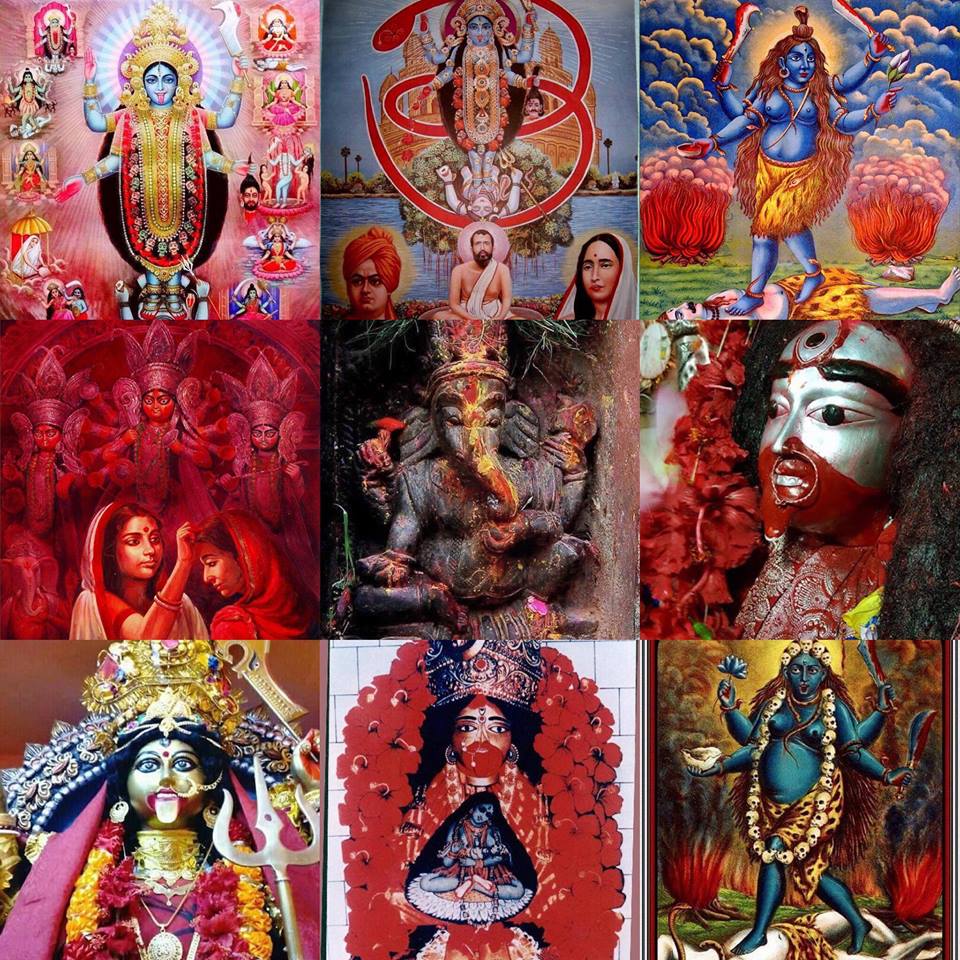
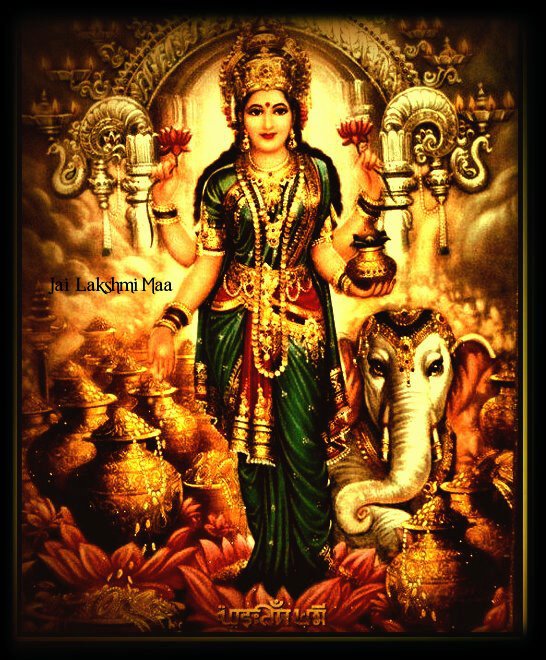

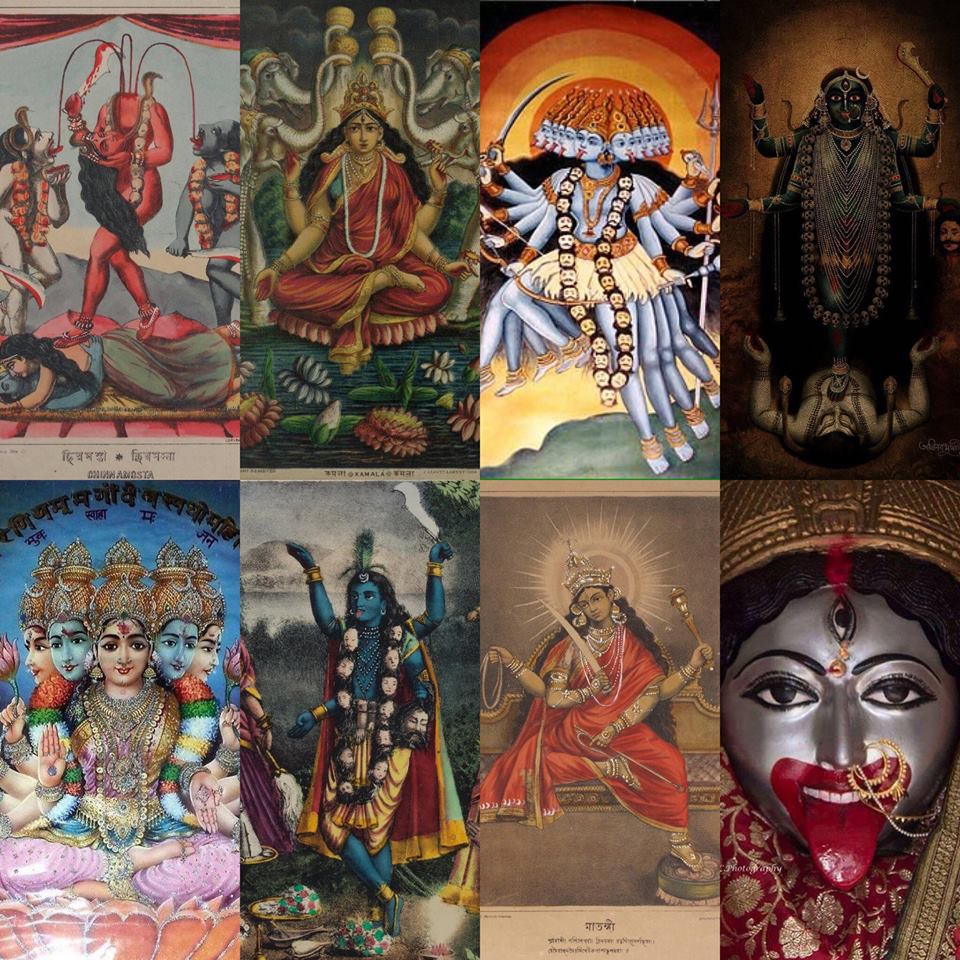
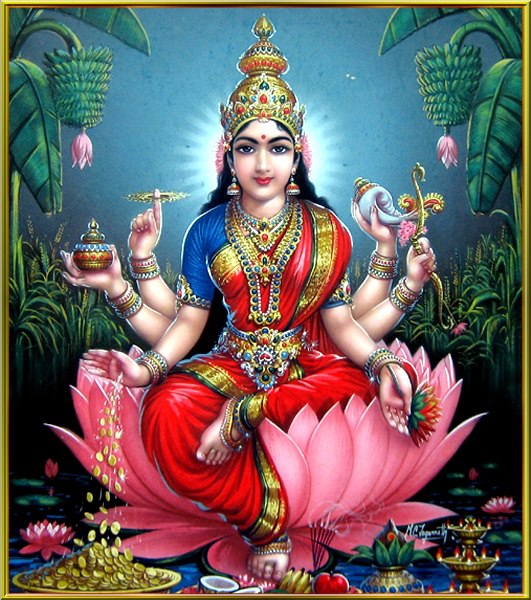



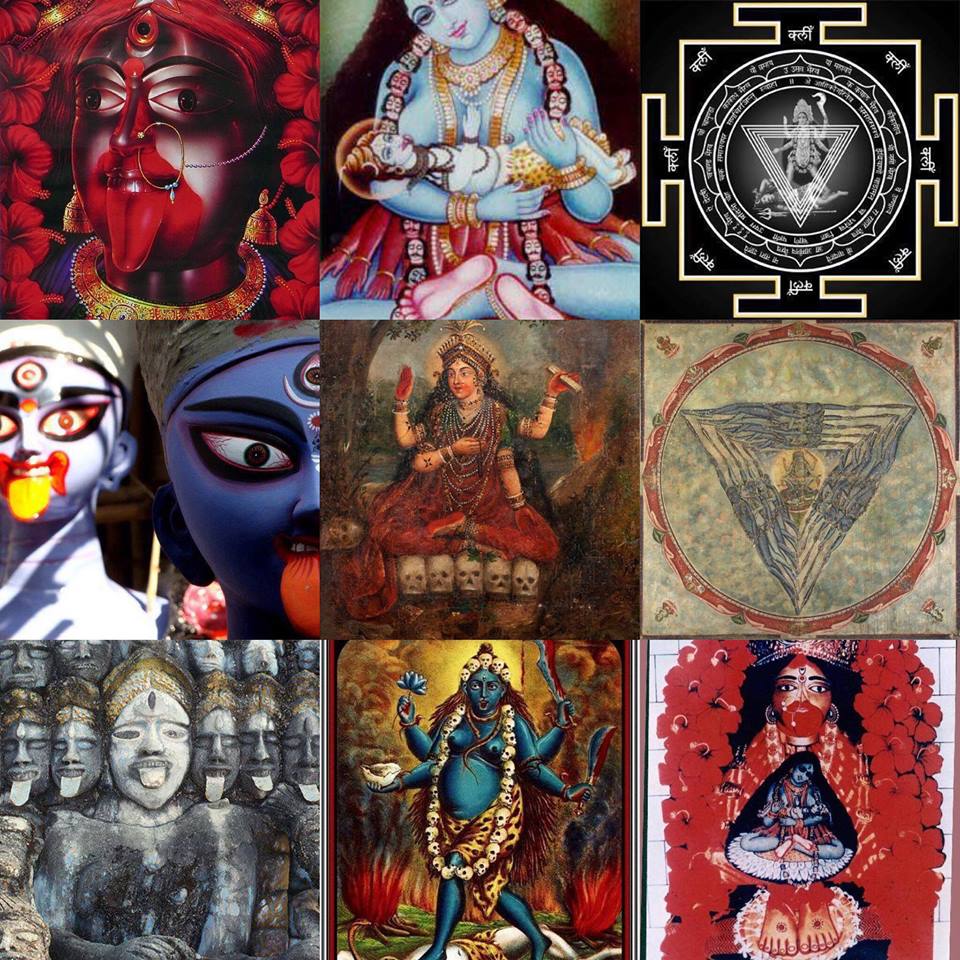


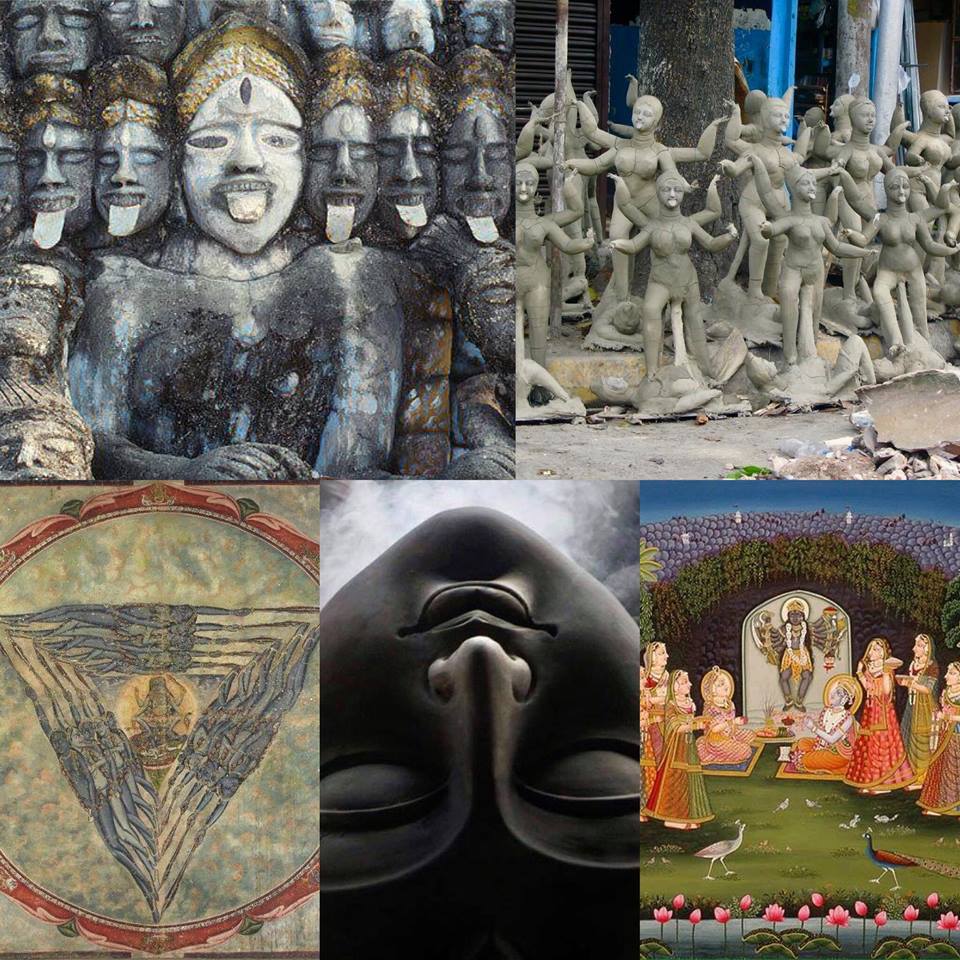







 RSS Feed
RSS Feed























